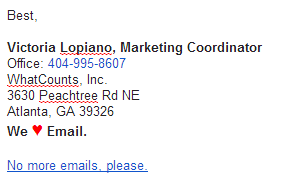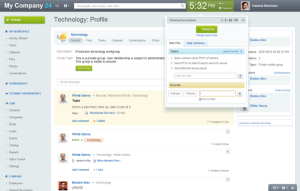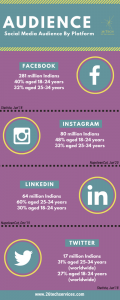By now, most marketers have realized that email is one of the best channels to impact potential customers, current customers, and even lost customers. In fact, email marketing has consistently ranked as the best channel in terms of return on investment. Additionally, I’m sure most professionals can attest to checking their email multiple times a day, so we know if done properly, email can make a definite impact.
But these facts are not kept under lock-and-key. Email is not a secret weapon that only the savviest marketers know about. Instead, email is increasingly becoming a mainstay in practically everyone’s marketing mix. Because of this, standing out in the inbox amongst the onslaught of other emails is crucial, not to mention difficult.
One method which has seen a great deal of success, not to mention a down-right positive response from customers, is directly personalized emails.
Personalized emails have confirmed themselves to be successful. In fact, personalization can deliver up to 6x higher transaction rates; proving that they have a well-deserved place in your email marketing mix. One type of personalization that is worth testing on your audience is sending emails from a personal email address, opposed to the brand address. For example, instead of sending an email with the personalization confined to the first name of the recipient, up the ante by sending it from the name and email address of a sales or marketing professional at your company.
Here is an example from our partner, Movable Ink.
Let’s walk through the fundamentals that must be considered when crafting, scheduling and sending this specific type of personalized message.
-
CAN-SPAM Compliance
Just because you are sending an email from a personal email address, does not mean you’re free to ignore compliance standards. If you are sending commercial or transactional messages to a group, you need to include a clearly marked opt-out/unsubscribe link. You also need to include your physical mailing address to notify recipients where you are located. Finally, you will also want to ensure the email address you are sending from has been approved by the manager of that account. It is important that this email address is valid and that there is someone on the other side that will receive any responses to the email, and be able to answer in a timely fashion. To that note, it is ideal to send from a familiar address that readers will recognize; this is a benefit to you, as subscribers will be much more likely to open your email.
-
Design
Typically, the thought behind sending from a personal email address is that you want the email to appear as if it was actually written and sent from that person, and not from an automation tool. Achieve this by keeping your message simple and clean—essentially appearing as a plain text email. You want to make the recipient feel that this is a natural conversation with another person. Keep images at a minimum—in fact, it is preferable to exclude images all together for this approach.
When designing your email, you will want to consider how to include the physical mailing address and opt-out link to where it is not hidden, but is discreet, so it does not take away from the essence of your email. An option could be to pop this information right into the persons email signature.
For example:

-
Frequency
The best way to determine how often to send this type of email is (surprise!) to perform some testing and see what responds—how often is too much and what is just right. Although sending group emails from a personal send address is likely to earn you some extra high open rates, you most likely do not want to employ this format on a regular basis—it may lose some of its luster if it is your most common style of email.
Instead of going all in, test out the waters on noteworthy scenarios, such as an event your company is hosting, or a really useful whitepaper. See what happens when you send a personalized email three times in a row for one event, and then scale back to once out of three times for the next event.
-
Subject Lines
When crafting your subject line, it makes sense to ditch the marketing speak. Personally, when an email is coming from a “person,” but the subject line is blatantly promotional, I immediately catch what’s going on and am much less likely to open the email. For emails coming from a personal address, the draw is often in the simplicity and personal nature of the email, not necessarily an attention grabbing subject line (which would be a must for a most other email sends).
So, next time you are looking for a successful method to make an impact in the inbox, test out sending from a person over the brand, and see how it performs.
Business Articles | Business 2 Community
(426)










